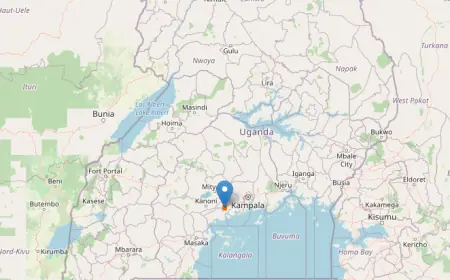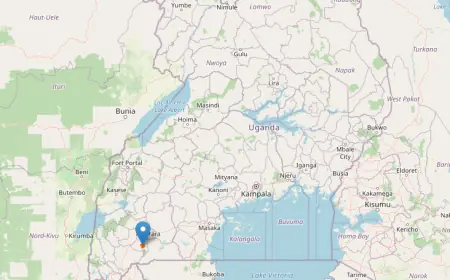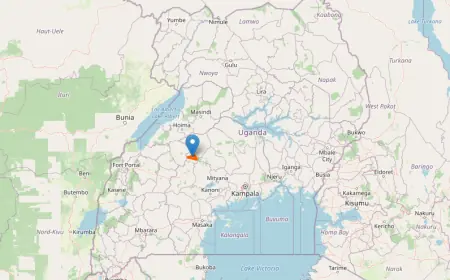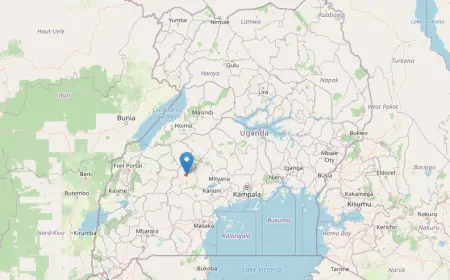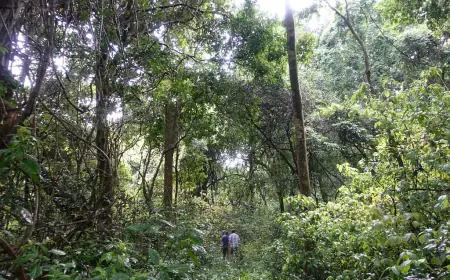Rwoho Central Forest Reserve
Rwoho Central Forest Reserve is a remarkable testament to Uganda’s commitment to preserving its natural heritage. Despite the challenges it faces, the reserve continues to thrive, providing a sanctuary for unique species and a source of livelihood for the local communities.
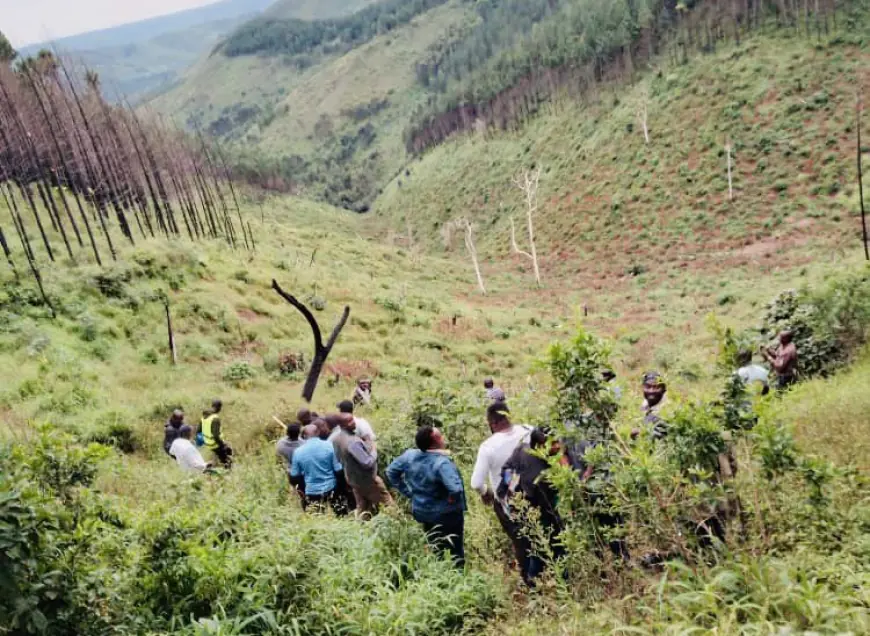
Once upon a time, in the heart of Africa, there was a land of rolling hills and vast valleys. This land, known as Uganda, is home to a myriad of natural wonders, one of which is the Rwoho Central Forest Reserve. Nestled in the south-western region of the country, this reserve is a testament to the beauty and diversity of Uganda’s flora and fauna.
Location and Size
The Rwoho Central Forest Reserve is located to the south of Bugamba Central Forest Reserve in the Rwampara and Isingiro districts. The reserve covers extensive high ground and numerous valleys, including the majority of the Kyezo Valley’s western watershed. Spanning an area of 91 square kilometers, it is maintained on behalf of the Government of Uganda by the National Forestry Authority (NFA) under the National Forestry Authority and Tree Planting Act 8/2003.
Setting and Structure
The forest’s plantation area consists of 12 compartments totaling approximately 1,580 acres. There are 1548 acres of plantable land. Existing fire lines and roadways cover 6.6 hectares and 19km, respectively. The forest is located in a region of the country with a moderate population density. As a result, the forest is under strain for firewood, construction poles, grazing, and other non-timber forest products.
Biodiversity
Rwoho Forest Reserve is very important since it is home to species that cannot be found anywhere else in Uganda’s protected regions. These include Carrisa edulis, Pinus caribaea, Newtonia, Maesopsis, and Entandropragma and Albizzia Markhamia tree species, which occur in valleys. The planting of conifer species started in 1964 in Rwoho Forest Reserve, and Eucalyptus grandis was used in fire lines.
Climate
The forest reserve is in a low rainfall zone; annual rainfall is 865 mm and falls on 74 rainy days. However, because of its high altitude, evaporation is quite minimal. This guarantees that soil moisture is available for an extended period of time.
Threats and Interventions
The reserve is threatened by human activities, including clearance for agriculture, grazing, and firewood collection. Fire is the main threat to the productivity of the plantation. As a result, the United Nations Development Program implemented the Rwoho Forest Community Conservation Project to alleviate some of the threats. The goal of the project was to encourage conservation of the forest through raising awareness, promoting new sources of wood, and developing alternative income opportunities such as beekeeping The project also encouraged the recovery of forest biodiversity through enrichment planting with indigenous tree species.
In conclusion, the Rwoho Central Forest Reserve is a remarkable testament to Uganda’s commitment to preserving its natural heritage. Despite the challenges it faces, the reserve continues to thrive, providing a sanctuary for unique species and a source of livelihood for the local communities. It is a shining example of the delicate balance between human needs and environmental conservation.
What's Your Reaction?
 Like
0
Like
0
 Dislike
0
Dislike
0
 Love
0
Love
0
 Funny
0
Funny
0
 Angry
0
Angry
0
 Sad
0
Sad
0
 Wow
0
Wow
0





























































